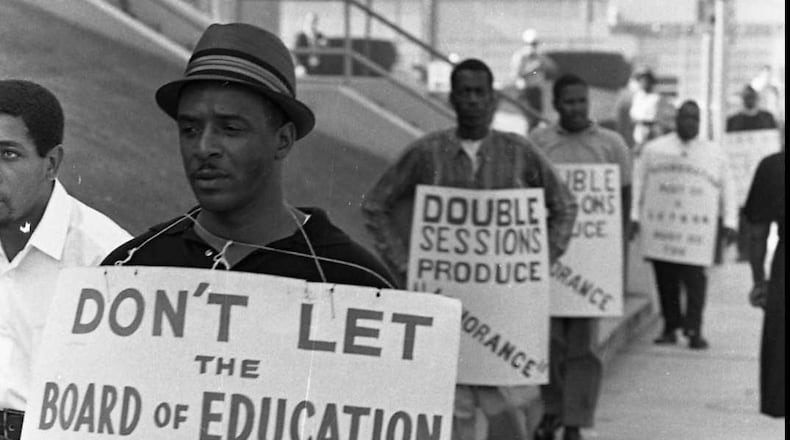The resegregation of public schools in the South troubles academics, civil rights activists and researchers. It’s been on the agenda of every major education conference or seminar I’ve attended in the last three years.
However, it doesn’t seem to be on the minds of parents.
Parents worry about whether class sizes are too large, whether math and science courses are advanced enough and whether their kids are competitive for Georgia Tech or the University of Georgia. They don’t seem to fret about whether their child sits next to a child of a different race or ethnicity — and fewer students do, a byproduct of growing residential segregation and school choice programs.
Yes, parents endorse diversity in principle, but not enough to pester the school board or push for rezoning to achieve racial balance. The research on diverse schools suggests advantages accrue to all students, including less prejudice and stereotyping and higher levels of cultural competence. Minority students show improved academic performance, often because integrated schools provide more resources and opportunities.
As John King Jr., former education secretary under the Obama White House and now president of the Education Trust, recently told education writers at a Washington conference, only a third of high schools with high black and Latino enrollment offer calculus, compared to 56 percent of those with low numbers of black and Latino students.
But that doesn’t necessarily sway families to seek out diversity, even as more of them enjoy greater choice in selecting their child’s school.
In a recent study, Pennsylvania State University looked at the decisions of public school students transferring to charter schools when given the option of schools with different racial compositions. The finding: Black and Latino students tended to choose charters more racially isolated than the public schools they left.
Today, more than one in three black students in the south attends a school where 90 percent of their classmates are non white. The retreat from integration concerns Penn State researcher Erica Frankenberg, an Alabama native who studies segregation.
In the wake of the Supreme Court's 1954 Brown V. Board of Education ruling, the South led the nation in desegregating its schools and boasted the most integrated classrooms in America, said Frankenberg, who co-authored a new report by the UCLA Civil Rights Project on the resegregation of Southern schools.
Among the report’s conclusions and warnings:
•From 1954 to 1988 there was an increase in the interracial contact between whites and black students in the South as a result of court-ordered integration. However, resegregation began to re-emerge in 1990.
•The South has a small but rapidly growing share of charter schools, which in the region—as in the country—are even more segregated for black students than the traditional public schools.
•Private schools represent about 7 percent of the region’s enrollment and are disproportionately white. In some states, including Georgia, legislatures have provide subsidies to private schools through the tax system. (Georgia’s tax-credit scholarship allows taxpayers to donate money to a private school for student scholarships in exchange for a state income tax credit. The program diverts $58 million a year in income tax from state coffers to private school scholarships.)
•The days of court-ordered mandatory reassignment are over; today’s integration efforts almost always involve carefully designed school choice
Frankenberg believes parents and communities can be convinced of the benefits of integrated classrooms. “There is no need to see diversity and quality as trade-offs,” she said in a telephone interview.
Parents may not place a premium on classroom diversity because most accountability measures don’t. “We’ve narrowed this understanding of what a good school is to something measured only by test scores.” said Frankenberg.
Frankenberg sees some communities resisting segregation, citing the new diversity efforts n New York City where white students represent only 15 percent of the public school enrollment, yet a third attend majority white schools. Those diversity policies have been enabled in part by increased flexibility granted from the federal government.
While New York and Massachusetts are using this new flexibility to further diversity, the easing of federal oversight could go the other way in some states. “Flexibility might be good for those states,” said Frankenberg, “but is it good for states where diversity is not necessarily on the table?”
About the Author
Keep Reading
The Latest
Featured



